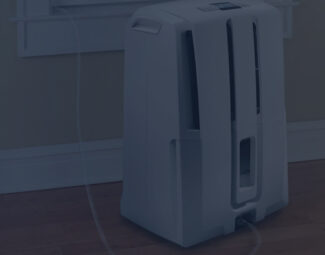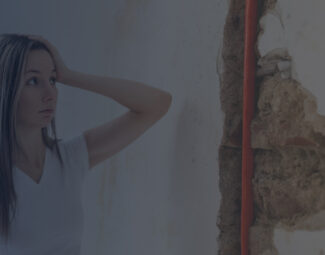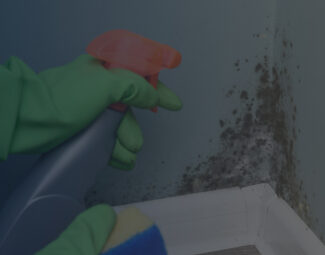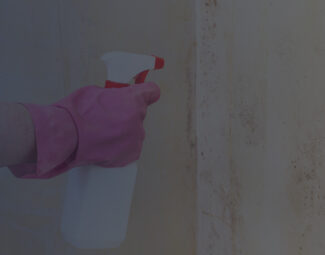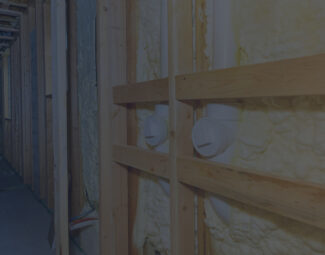B asements are usually damp places, so if the humidity level overcomes a bit the optimal value shouldn’t always be a concern. In fact, if it doesn’t cause the emergence of mold or structural problems, it can be easily solved by installing a basement dehumidifier that will absorb the excess of water and help dry out the air. However, sometimes even a bit of dampness can indicate the beginning of a bigger issue that can, in time, produce considerable damage.
Our article covers the most common flooding problems and offers solutions, so the issue can be quickly fixed. So, if your space has been particularly moist lately, it may be time to perform a close check-up on it. Here are the symptoms your space may show:

Basement Flood
#1. The whole basement floor is flooded
This is an owner’s worst nightmare but it isn’t as uncommon for this issue to occur.
Causes
- A plumbing issue - It is enough for a pipe or a hose to crack for the area to quickly fill with water. A malfunction in an appliance that is linked to a water source can produce the same damage
- Outside drainage system is overcharged - It might handle smaller amounts of water or is installed improperly. Throughout heavy rains that keep on for days, it may fail to collect all the water. Or it may be clogged with debris and unable to drain the water
- The city sewer system is ineffective - It may get overcharged during snows and storms and back up the water into your cellar
Fixes
- Consider adding an interior drainage system - It will collect the water before it floods the floor and send it to a sump pump that will evacuate it outside
- Check the plumbing system - If the pipes are old or in bad shape, you should consider replacing them to avoid future accidents
#2. The foundation wall is stained
Water may be accumulated around the foundation on the exterior.
Causes
- Clogged gutters - They can no longer handle the water and are overflowing, allowing it to leak into the cellar and cause the walls to crack
- Clogged window wells - Their purpose is to stop moisture to build up inside, but if the drain is blocked by leaves or dirt, the water will leak inside
- Incorrect slope - Either the landscape or the driveway isn’t built at the right angle and directs the water towards the house
- Downspouts don’t send the water far enough - The minimum length should be approximately 10 feet, otherwise, the water can leak back towards the foundation
Fixes
- Fix the issue of exterior drainage - Check the gutters and landscape slope
- Repair the windows and install well covers - Thus, you will stop leaves from clogging them while if the windows are well-sealed they will reduce leakage
- Check for cracks and repair them - If the foundation is damp, the water has already found a way in and is probably through cracks, so make sure you get them fixed
- Check for mold - Clean it and consider installing an air purifier that can stop the spores from spreading
If your foundation has been exposed to water, you will want to dry the space ASAP. Take a look at our best dehumidifiers for crawl space and pick one that will prevent the rise and spread of mold in your home.
#3. Water coming up through concrete floor
You will notice that the floor is wet, although proper flooding may not be in question.
Causes
If lately it has been raining heavily and water gathered around the house due to improper drainage system, the ground under the house may have gotten saturated. This created pressure under the concrete floor and pushed the water through cracks and possible openings. If the pressure is too high, new cracks may appear allowing even more water to inundate the space.
Fixes
On the spot, drain the water and proceed to repair the cracks in the concrete. At the same time, ensure proper ventilation and try to dry out the walls to prevent further damage. Long-term fixes will consist of the improvement of outside drainage, which can be done as follows:
- Maintain the gutters clean - Make sure they aren’t clogged and can function at maximum capacity. If damaged, repair or replace them
- Check the landscape slope - It should slope away from the house, otherwise, all the soil will be directed towards the foundation. This issue can be more difficult to solve as it implies the trucking of considerable amounts of soil that can alter the grade of the slope and reverse its direction
- Consider adding downspout extensions - The water is drained further apart from the foundations, preventing accumulations

Mold Growth on Walls and Ceiling
How Can a Wet Basement Affect Your Health?
Damp basements can, in time, affect the structure of your building. The foundation may suffer permanent damage that will require serious investments in repairs. But, more importantly, the basement can turn into a health hazard for you and your family, as the humidity can be the starting point for a series of illnesses. In the following paragraphs, we will describe the dangers you can encounter when dealing with excessive basement moisture:
- Mold: Wet walls and floors are the perfect spaces for mold to grow and spread. It can easily infest the entire room and start sending its spores upstairs, along with a musty odor. Moreover, the dampness can reach other rooms, turning them into unhealthy living spaces. You may experience allergy-like symptoms like coughs, itchy skin, or sneezes. At the same time, depending on the type of mold, wheezing, fatigue, and even depression may set in. If the problem isn’t solved fast, lung illnesses will be just a step away.
- Bacteria and germ growth: A moist environment will just give bacteria a push to multiply and grow. Like other light particles, they can easily find a way to travel through the air and contaminate all the rooms in the house. Bacteria are highly dangerous for health. They can cause infections and weaken the immune system, making it more prone to illnesses. Not to mention that some bacteria have been connected to health issues that can lead to death.
- A wide array of pests: There’s no coincidence that basements are usually regarded as unwelcoming places. The moisture in there can attract all sorts of creatures, starting with dust mites, which can become airborne and cause allergies, and continuing with rats and mice, which will thrive and damage the objects stored downstairs, but at the same time release more bacteria and viruses that may end up in your respiratory system.
Bottom Line
By keeping the foundation of the house dry and in good shape, you protect both your basement and your entire structure. As shown, the causes that send water inside are diverse and they can produce milder or more severe damage. This is why it is important to pay attention even to the most insignificant leakage or water spots that may appear, as they may announce a more serious problem. At the same time, certain hygiene is mandatory when it comes to cleaning the gutters, the drainage system, and window wells.



